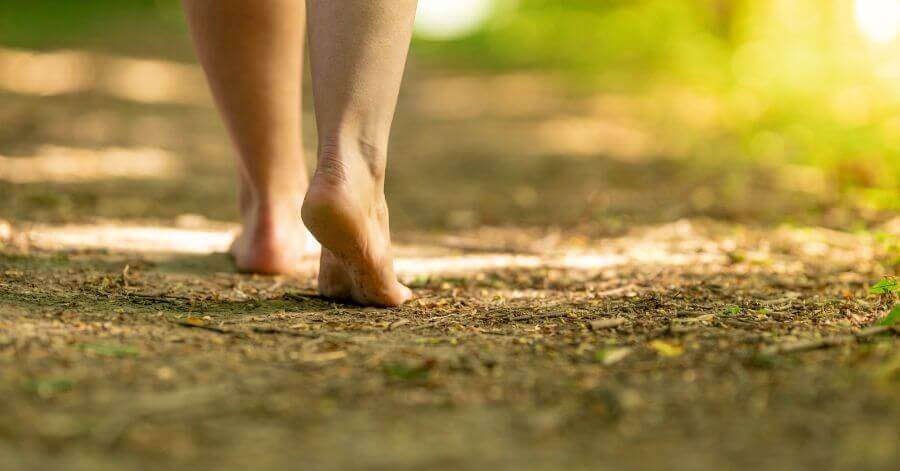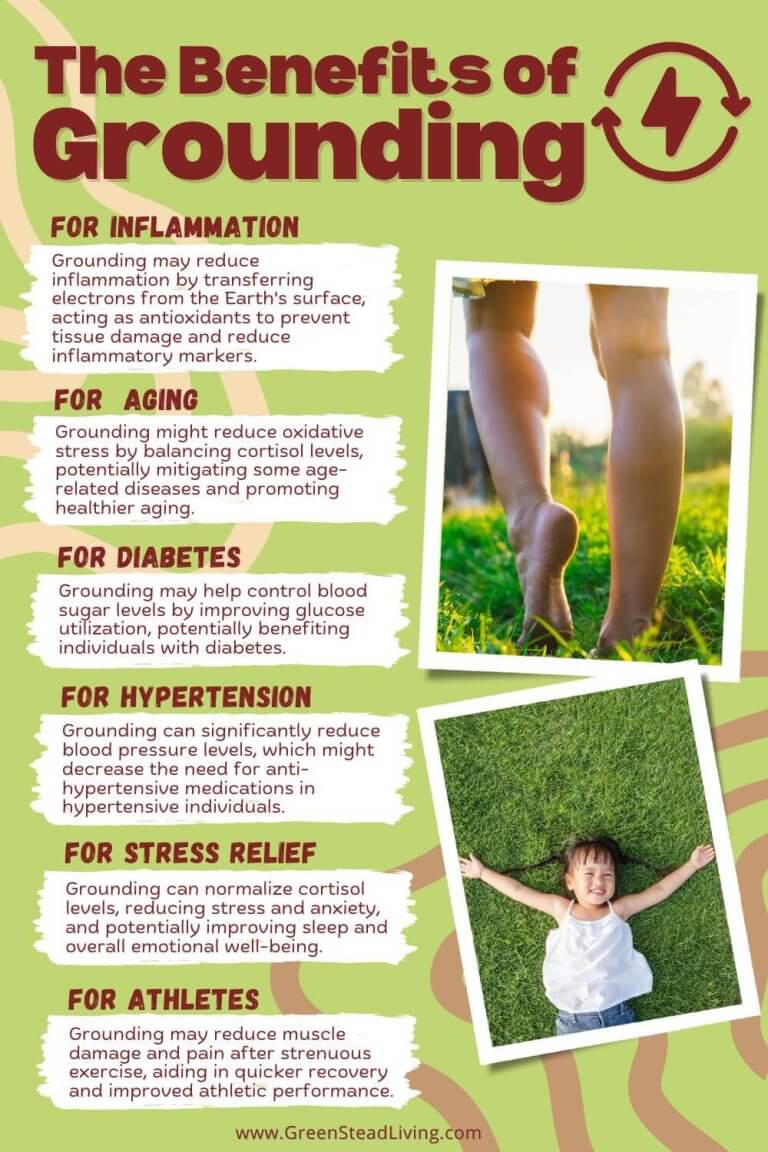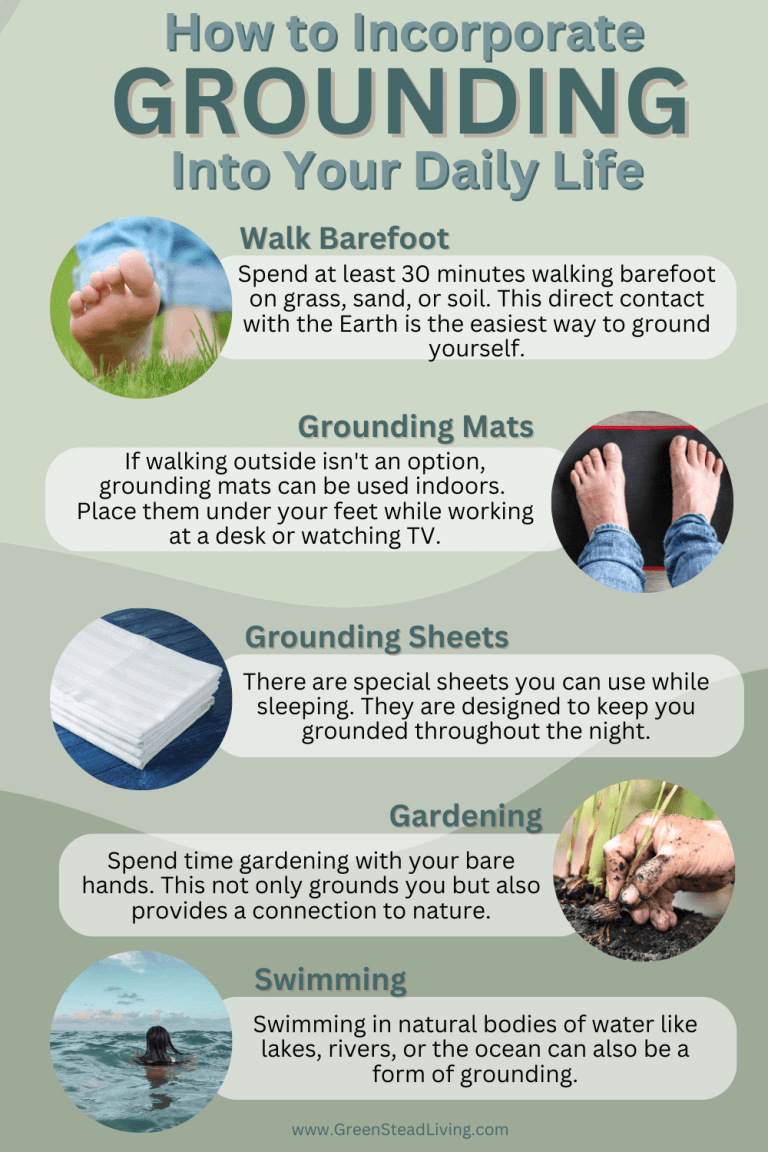
The 5 Best Companion Plants for Tomatoes
Here are the five best companion plants for tomatoes: basil, marigolds, carrots, borage, and beans.

Since 2022, more and more people have been searching for “Grounding” on Google, hitting a record high as of writing in July 2024. But why is there so much interest in something many scientists have called “pseudoscience”? Is there any real science behind it, or is it just a placebo effect?
Unfortunately, there is no definitive answer; a lack of funding and an unjust scientific skepticism keep the potential benefits of grounding lurking in the shadows. Yet pioneer and small-scale studies have shown remarkable benefits of grounding in both animal and human studies, with health improvements from reduced inflammation to improved mental energy having been demonstrated.
This article will explain what the latest research says about grounding, including its benefits and criticisms, and how you can easily incorporate grounding into your daily life. We’ll find out if grounding has the opportunity to be a hidden health secret or simply a money-making gimmick.
Grounding, or earthing, means connecting your body directly to the Earth’s surface, like walking barefoot outside or using grounding devices. The idea is that the Earth’s surface has a negative electric charge because of free electrons, and when you walk barefoot on grass, sand, or soil, or use grounding devices, your body absorbs these electrons.
Our bodies can build up positive charges from things like synthetic floors, rubber-soled shoes, and electronic devices, so grounding helps balance these charges. You can even test this with a voltage meter to see the difference between when you’re grounded and when you’re not.
The big question is: does grounding actually affect our health?
Several studies have looked into the benefits of grounding, though many are funded by companies selling grounding products. While this doesn’t automatically discredit them, it’s something to keep in mind. Here’s what some of the research says.

Inflammation is the body’s response to injury or infection, helping to isolate damaged areas until the immune system can clear out harmful substances. While inflammation is useful for short-term injuries, it can cause more harm than the initial injury if it becomes chronic where inflammation can damage healthy tissues and weaken the immune system.
Grounding could help lower inflammation in the body by providing a natural defense similar to antioxidants (molecules that can neutralize harmful free radicals in the body).
In one study, a 33-year-old woman who had suffered a long-term gymnastics injury at age 15 experienced a reduction in heat from inflamed areas, as shown by thermal imaging cameras.

Panel B’s top image shows an arrow indicating her knee, where she experienced pain and inflammation. The lower images, taken after 30 minutes of grounding with an electrode patch, show a noticeable decrease in inflammation, and the patient reported a mild reduction in pain.
Although the study’s methodology has faced criticism—since the initial image was taken while she was running and the subsequent images after 30 minutes of grounding and rest—the patient’s self-reported outcomes were significant. After four weeks of treatment, she was able to play soccer with minimal pain for the first time in 15 years, and six months later, she completed her first half-marathon.
Aging is a natural process influenced by internal and external factors. One important factor in aging is oxidative stress, which occurs when there’s an imbalance between harmful prooxidant molecules and protective antioxidant molecules. While reducing oxidative stress hasn’t been consistently proven to extend lifespan, some studies have found that high levels of prooxidant molecules are linked to age-related diseases.
Some pilot studies have indicated that grounding the human body during sleep reduces nighttime levels of cortisol, which are indirectly related to oxidative stress.
Although only preliminary, the research is extremely encouraging that grounding might help with age-related issues through multiple mechanisms.
The rise in diabetes since the 1950s coincides with the use of synthetic shoe soles. Of course, no one is suggesting that the invention of synthetic shoes is the sole reason for diabetes – diet and lifestyle are likely major factors – some studies suggest that disconnecting from the Earth might worsen diabetes and contribute to its rapid rise.
In a study involving twelve patients with non-insulin-dependent diabetes mellitus (type 2 diabetes), grounding was found to increase glucose utilization, indicating improved blood sugar control. The researchers suggested that a lack of contact with the Earth could have the opposite effect, potentially exacerbating conditions such as diabetes, obesity, and high blood pressure.
In a separate clinical study, researchers explored the effects of grounding on individuals with high blood pressure (hypertension). This study included ten participants, all of whom were on one to three medications to manage their condition.
The results were promising: every participant experienced a decrease in blood pressure, and many were able to reduce their reliance on anti-hypertensive medications. Specifically, systolic blood pressure levels dropped by 8.6% to 22.7%, with an average reduction of 14.3%.
The study also noted that grounding for at least 10 to 12 hours daily significantly lowered blood pressure, indicating that grounding could serve as a helpful complementary method for managing hypertension. While this does not establish a causal relationship, the observed correlation is compelling and warrants further investigation.
Grounding is often praised for its ability to relieve stress and anxiety, a benefit supported by numerous self-reports and documented in at least five studies focused on physiological and emotional stress.
Similar to inflammation, our inherent stress response is essential for handling immediate threats, like triggering the “fight-or-flight” reaction in dangerous situations.
However, prolonged chronic stress, such as that resulting from emotional distress due to domestic abuse, can lead to harmful levels of stress chemicals like cortisol, which can disrupt circadian rhythms, cause sleep disorders, and contribute to hypertension and cardiovascular disease.
Grounding has been shown to help normalize cortisol levels, as evidenced by its calming effect on brain electrical activity.
One study examined the impact of earthing mats on stress and anxiety in animals, finding that animals using earthing mats exhibited less anxiety and spent more time in open areas of an elevated maze, a behavior indicating lower anxiety levels. Additionally, these animals showed reduced levels of corticotropin-releasing factor (CRF), a hormone associated with stress.
The same study also observed a trend toward lower neuronal activation in the animals, suggesting that earthing mats might help stabilize physiological processes, though this result was not statistically significant. While similar tests have not been conducted on humans, it is reasonable to anticipate comparable outcomes.
As a regular gym-goer (although admittedly far from an athlete), I’m particularly interested in grounding’s potential to improve responses to tissue and muscle damage, which has been shown to enhance athletic performance.
A study examined this by dividing 32 healthy young men into two groups: one grounded to the Earth and another that was not (sham-grounded). Both groups performed 200 half-knee bends to induce muscle strain, with researchers monitoring their pain levels and blood samples over two days.
The findings were significant. The grounded group experienced less muscle damage, as evidenced by lower levels of creatine kinase (CK), an enzyme that increases with muscle injury.
On the second day, the sham-grounded group showed a significant rise in CK levels, unlike the grounded group. Additionally, the grounded participants had higher counts of neutrophils (a type of white blood cell) and platelets, crucial for blood clotting, on certain days, suggesting that grounding can aid in faster recovery from muscle strain and potentially improve overall athletic performance.
One of the most promising benefits of grounding is that, if it works, it presents one of the most simple, accessible, and enjoyable treatments available. Even if the benefits are proven to be small, the lack of side effects makes it a no-brainer.
To ground, simply walk, sit, or stand barefoot outside for 30 minutes a day. Alternatively, you can invest in grounding mats and blankets to ground while sleeping in bed or watching Netflix on the couch. While the science isn’t fully proven, there’s no harm in trying. The best part is, it’s free and easy. What have you got to lose?
Here are some practical ways to incorporate grounding into your daily life:

Grounding has shown potential health benefits by providing electrons from the Earth, which can reduce inflammation and oxidative stress. While some studies are criticized, grounding has been linked to improvements in conditions like high blood pressure and diabetes.
Reconnecting with the Earth might enhance your body’s defenses and support healing. Though still a developing field, grounding could be a promising way to improve health and quality of life.
Grounding is a simple, enjoyable, and free practice that could potentially improve your health. While more research is needed to fully understand its benefits, the existing studies and anecdotal evidence suggest to me that it is at least worth trying. Whether you choose to walk barefoot outside, use grounding mats, or incorporate other grounding practices into your daily routine, the potential benefits with zero downsides make it a worthwhile addition to a healthy lifestyle.
Grounding, or earthing, means connecting your body directly to the Earth’s surface, like walking barefoot outside or using grounding devices. The idea is that the Earth’s surface has a negative electric charge because of free electrons, and when you walk barefoot on grass, sand, or soil, or use grounding devices, your body absorbs these electrons.
Our bodies can build up positive charges from things like synthetic floors, rubber-soled shoes, and electronic devices, so grounding helps balance these charges. You can even test this with a voltage meter to see the difference between when you’re grounded and when you’re not.
To ground, simply walk, sit, or stand barefoot outside for 30 minutes a day. Alternatively, you can invest in grounding mats and blankets to ground while sleeping in bed or watching Netflix on the couch.
Unfortunately, there is no definitive answer; a lack of funding and an unjust scientific skepticism keep the potential benefits of grounding lurking in the shadows. Yet pioneer and small-scale studies have shown remarkable benefits of grounding in both animal and human studies, with health improvements from reduced inflammation to improved mental energy having been demonstrated.

Here are the five best companion plants for tomatoes: basil, marigolds, carrots, borage, and beans.

Here is a companion planting chart for herbs, showing which herbs work great together, and which should be avoided.

Looking for which plants are best for companion planting with flowers? This article contains a table with the best flowers and their many benefits.

Here are the 5 best companion plants for peppers that will deter pests, attract pollinators, increase fruit set and yield, and enable your peppers to thrive.

Learn how to preserve eggs for long term use, using the age-old technique of water glassing.

The ultimate guide to reap the benefits of no-dig gardening, complete with a step-by-step guide on building your own.